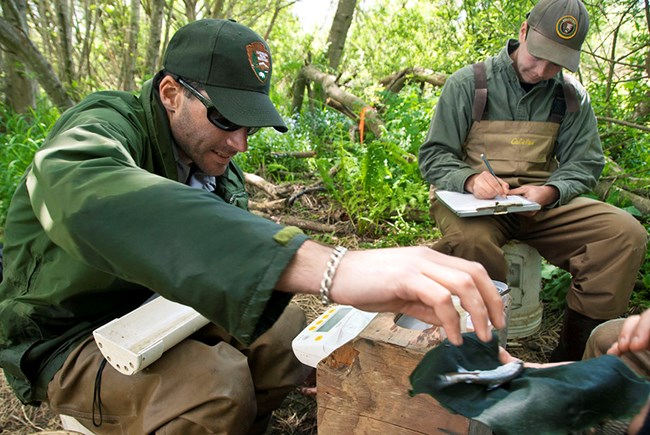
NPS / Jessica Weinberg McClosky
The intent of park vital signs monitoring is to track the status and health of park ecosystems. Since it is not possible to measure everything in the natural world, specialists have chosen particular animals, habitats, and abiotic factors (e.g. water, air, soil, etc.) as “vital signs” that help indicate the health of the ecosystem. Repeated measurements of these vital signs over a long period of time are key to understanding how the ecosystem might be changing, ultimately assisting park managers in their mission to preserve parks "unimpaired for future generations."
The San Francisco Bay Area Network has chosen a diverse range of vital signs to measure, including anadromous fish, marine mammals, rocky intertidal habitats, plant communities, hydrology, freshwater quality, and birds. By looking at a range of vital signs and their trends over time, we can begin to see a broader story of the natural systems in the San Francisco Bay Area. For example, what is the relationship between the volume of water discharging from streams and the number of salmon able to survive in creeks and migrate to the ocean? Will changes in the species of plants within woodlands or riparian habitats affect the abundance of songbirds? Data that the NPS are able to generate are core to our mission – both to make good management choices and to share an improved understanding of our world with park visitors.
The SFAN Monitoring Plan provides a detailed description of the strategy for monitoring the following vital signs:
Vital Sign Quick Reads
Last updated: April 19, 2018
